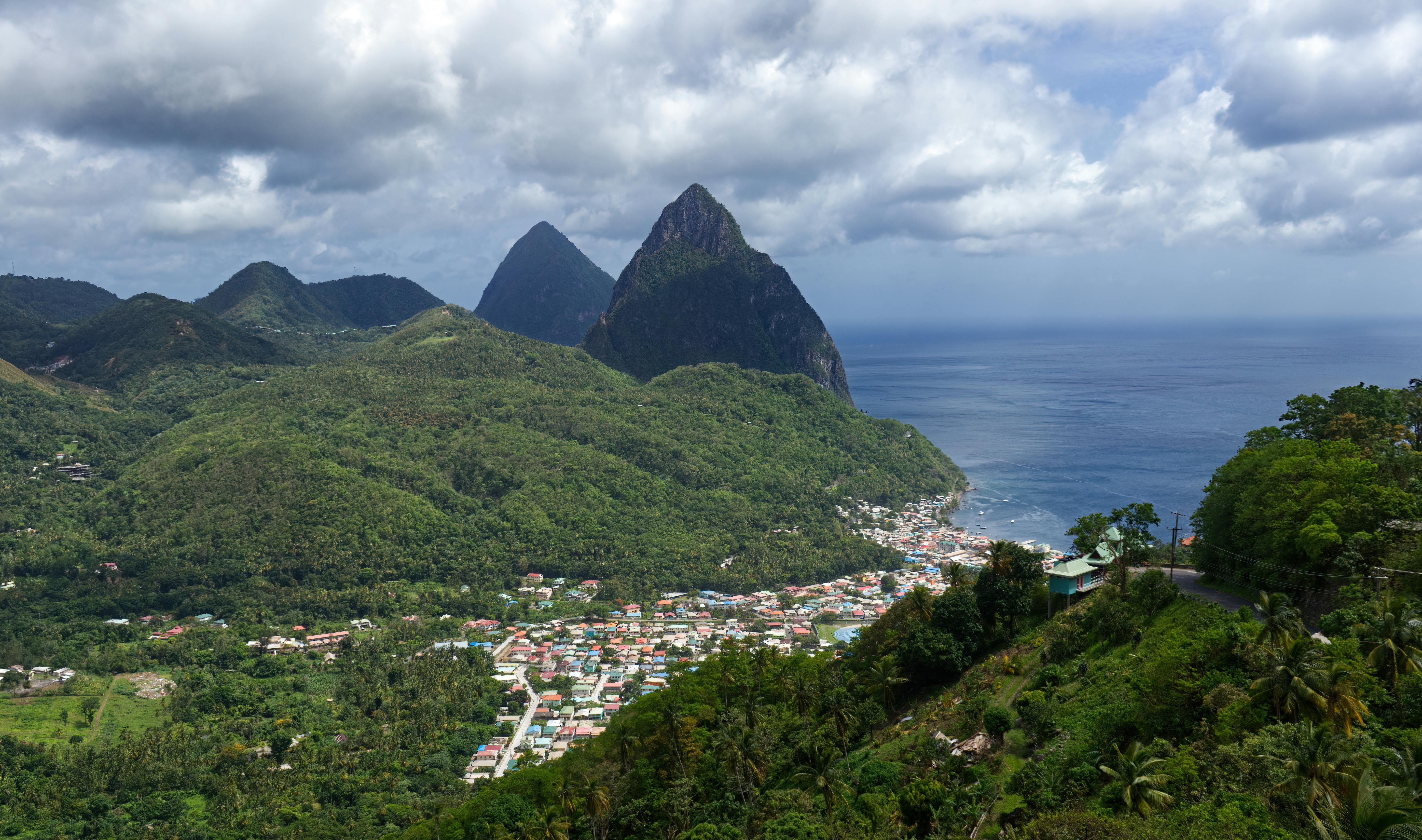Saint Lucia Offline Maps, Mobile Data, and Safe Cashless Travel: A Simple, Field-Tested Guide
While many travel guides drown you in scattered tips, this is the short, practical playbook I wish someone handed me before my first loop around Saint Lucia—offline maps that actually work, mobile data that doesn’t melt your budget, and cashless moves that feel safe rather than risky. Here’s the immediate answer if you’re skimming: download map areas before you land1, pick an eSIM or local SIM based on stay length2, and use contactless cards or mobile wallets with basic security hygiene (more on that in a moment)11. Simple. Mostly. Actually, let me clarify that: it’s simple once you see the sequence.
Having worked on dozens of travel tech rollouts for clients, I’ve consistently found that the trick isn’t knowing options—it’s sequencing decisions so you don’t overpay or get stuck offline at the worst moment (think: a steep side road outside Soufrière with zero signal—been there). What really strikes me about Saint Lucia is how quickly a calm plan pays off: a few taps before wheels-up, a decent data choice, and a cashless setup that just works. And then… everything clicks.
Why Offline Maps Matter in Saint Lucia
Back when I first started mapping island drives, I assumed LTE bars would always be there. They won’t be. The island’s lush topography—volcanic peaks, coastal bends, rainforests—can mean patchy reception in pockets even as coverage generally improves every year23. That’s precisely why downloading an offline area of Saint Lucia before you land is more than a convenience; it’s an insurance policy against detours that burn time and fuel. I know, I know—this sounds too simple. But the simplest preparation tends to be the killer differentiator in real travel.
Interestingly enough, offline maps also help with battery life. Your phone isn’t constantly hunting for a signal to stream tiles, so navigation feels smoother and your device runs cooler. In my experience, this pays off on long day trips: Castries to Gros Islet, or down to Soufrière and the Pitons, with a few beach pull-offs along the way. On second thought, let me be more precise—offline maps don’t replace situational awareness; they augment it. I still ask locals for final-mile tips because road surfaces and signage can shift after a storm.
“Smartphones have become the connective tissue of the travel experience, linking information, navigation, and transactions in real time.”
Quick Steps: Download and Set Up Offline Maps
Let me step back for a moment. Before debating data plans, lock in your maps. Here’s the straightforward flow I use, refined after too many late-night hotel Wi‑Fi scrambles:
- Open your maps app at home (strong Wi‑Fi) and search “Saint Lucia.”
- Choose Download Offline Map, then pinch to include your whole route grid: airport, north coast, west coast, interior.
- Turn on “Prefer offline maps” for navigation if your app offers it; update before leaving the hotel each morning1.
Definition-style answer, because you might need it for a quick skim: Offline maps are locally stored map data that let you navigate without mobile service, including step-by-step directions for driving and walking (traffic and live rerouting may be limited or unavailable)1. That’s it; no magic, just foresight.
Informations clés
I’ve never been fond of “winging it” on mountainous islands. A cached map plus a power bank is the easiest two-step buffer against hiccups—cheap, quiet insurance you’ll be grateful for when the signal flickers.
Picking Mobile Data: eSIM, Local SIM, or Roaming?
Based on my years doing this, I start with three filters: length of stay, phone compatibility, and tolerance for retail errands upon arrival. If you’re in for 3–7 days and your phone supports eSIM, that’s the cleanest setup—buy before you fly, scan a QR on the plane, land connected92. If you’ll be around for two weeks or more, a local SIM can be more cost‑effective, though it does mean a quick stop at a shop or kiosk. If your employer mandates a single corporate number, then roaming—configured well—can be fine, albeit often pricier7. I’ll be completely honest: I go back and forth on roaming because convenience is lovely, but surprise fees are not.
eSIM vs. Local SIM vs. Roaming: The Side-by-Side View
Okay, let’s step back and compare, because choice overload stalls action. The more I consider this, the more a simple table helps you commit quickly without second-guessing it later.
| Option | Idéal pour | Avantages | Watch-outs |
|---|---|---|---|
| eSIM | Short trips; no retail stops; dual-line needs | Activate before landing; keep home number; no SIM swapping9 | Phone must support eSIM; compare data caps and network partners10 |
| Local SIM | Week+ stays; budget‑focused travelers | Often cheaper per GB; local support | Requires stop at shop/kiosk; new number (unless dual‑SIM) |
| Roaming | Corporate phones; minimal setup | No SIM changes; your number stays | Potentially higher fees; monitor usage and caps7 |
Practical rule of thumb I use: if you’re in Saint Lucia for under a week and own an eSIM‑ready phone, eSIM tends to be the lowest friction path (and—by and large—cost‑competitive if you buy a plan sized to your actual needs)9. For longer stays or heavy data habits (think: remote work, HD video calls), local SIMs typically win on price. Honestly, I reckon roaming has its place for executives and families who simply won’t fiddle with settings—but set a usage alert the minute you land7.
eSIM: What to Check Before You Buy
- Device compatibility: Confirm your model supports eSIM (Apple/Android guidance helps)10.
- Coverage partners: Look for plans that partner with reliable local networks2.
- Data sizing: Roughly speaking, 3–5 GB covers navigation, messages, light social for a week; double if you stream.
- Hotspot usage: If you’ll tether a laptop, choose a plan that explicitly allows it.
“Global mobile connectivity is expanding, yet digital usage patterns differ—planning for local conditions still matters.”
The Map Setup I Use (and Why It Sticks)
Here’s what I’ve learned: when I outline the steps and run a quick test before departure, things go smoothly. When I don’t, I end up doing field surgery on my settings in a rental car. Sound familiar?
- Cache maps at home: Download Saint Lucia offline areas and a few key towns (Castries, Gros Islet, Soufrière)1.
- Star points of interest: Airport, hotel, gas stations, ATMs, medical centers, your planned hikes.
- Test in airplane mode: Navigate locally at home to confirm the app behaves as expected.
- Bring a power bank: Navigation plus photos can drain a phone faster than you think.
Actually, thinking about it differently: the goal isn’t perfection; it’s removing single points of failure. A cached map plus a modest data plan is more or less equivalent to “belt and suspenders” for navigation.
Saviez-vous? Saint Lucia uses the Eastern Caribbean Dollar (XCD), pegged at 2.70 XCD to 1 USD since the 1970s—this long‑standing peg helps price stability for visitors4.
Cashless Basics: Cards, Wallets, and When to Carry Cash
Those of us in the trenches of travel planning know the dance: you want the ease of “tap to pay,” but you don’t want to get stuck at a beach shack with a card‑only wallet. The balance in Saint Lucia is straightforward—carry a small amount of cash for tips and very small vendors, then lean on contactless cards and mobile wallets for mid‑to‑large purchases. Globally, contactless adoption surged post‑2020 for clear reasons: it’s fast, secure, and widely familiar now1112. I used to think magstripe cards would still be fine, but chip‑and‑PIN and contactless are the expectation in most tourist‑centric spots.
Quick Cashless Rules That Usually Help
- Enable transaction alerts on your card apps—instant feedback is a quiet superpower.
- Add your primary card to Apple Pay or Google Pay before departure.
- Carry a backup card stored separately; redundancy is underrated.
- Keep small bills for tips, small taxis, or rural snack stops.
“Consumers and businesses continue embracing contactless for speed and security—habits formed in recent years are sticking.”
I’m not entirely convinced every small vendor takes cards—because some simply won’t. But for hotels, tours, and restaurants in busier areas, tap‑to‑pay tends to work smoothly. Meanwhile, broader financial inclusion data shows digital payments becoming the norm worldwide, which aligns with what I’m seeing on the ground in tourist economies8. The result? Less time queueing at ATMs and fewer hidden fees.

Safety Essentials: Public Wi‑Fi, PINs, and Practical Security
Let me think about this: safety isn’t just about neighborhoods; it’s also about your phone. Public Wi‑Fi has risks—man‑in‑the‑middle attempts, rogue hotspots, weak encryption—so I treat it like a glass canoe: useful, but I don’t take it into rough water5. Use cellular data for banking whenever possible and lock wallets behind biometrics and a strong device passcode. If you must use hotel Wi‑Fi for something sensitive, a trusted VPN helps reduce exposure—no silver bullets, but layered defenses buy you margin.
- Turn on transaction notifications for all cards and wallets (real‑time verification is gold).
- Prefer chip‑and‑PIN or contactless; never hand your card out of sight if you can help it12.
- Keep a written note of emergency card numbers, stored separately from your wallet.
- Enable device‑level remote lock and “find my” features before departure.
From my perspective, this is less about paranoia and more about reducing cognitive load. The fewer “what ifs” hanging over you, the more you can enjoy the Pitons at sunset. Some of you are rolling your eyes right now—fair. Just keep in mind that quick contactless taps are demonstrably secure when EMV standards and tokenization are in play12. Generally speaking, it’s way, way better than swiping a magstripe at an old terminal.
“Mobile payments succeed when they deliver clear value with low friction—trust and usability, not just technology, drive adoption.”
When to Carry Cash (and How Much)
What I should have mentioned first: you will want some cash. I carry the equivalent of $40–$80 USD in XCD for tips (drivers, porters), small beach vendors, and the occasional rural café. ATMs exist in towns, and the XCD/USD peg makes rough mental math simple4. I used to hoard too much currency “just in case,” but now I draw a small amount and lean on cards for the rest. The more I travel, the more I see that blended approach winning—fast where it counts, flexible where it’s needed8.
A Note on Local Conditions and Backup Plans
Conference conversations reveal this again and again: resilience beats perfection. Download maps, keep a backup card, and store key contacts offline. If an unexpected outage hits a card network (rare, but it happens), you’re not stuck. If a cell dead zone appears, your cached map keeps you moving. One more thing—check your government’s latest travel advisory before departure; it’s the fastest way to learn about localized issues and entry updates56.
“Technology shifts are real, but human habits and trust perceptions set the pace—and they rarely change overnight.”
Advanced: Optimizing Your Data Costs Without Guesswork
Previously, I used to overbuy data “just to be safe.” Now I size more precisely. Here’s a simple mental calculator I share with clients:
- Maps/navigation only: ~0.3–0.6 GB/week (with offline maps set up)1.
- Messaging + social (light images): ~1–2 GB/week.
- Remote work/video meetings: add 2–4 GB/week per hour of weekly calls.
On second thought, if you’re a heavy content uploader (stories, reels), bump it another 1–2 GB. Not perfect, but pretty solid for planning. As of right now, eSIM marketplaces and local carriers both publish plan tiers clearly; compare before you commit29. Also worth mentioning: keep your home SIM active for SMS 2FA if your bank still insists on it, and route data through the travel line. It sounds fiddly, except it isn’t once you’ve done it once.
Credible Guidance That’s Worth Bookmarking
For roaming guardrails, the FCC’s consumer page remains one of the clearest primers on how to avoid surprise fees7. For a quick eSIM reality check (what it is, why it matters), mainstream explainers like the BBC and The Verge are beautifully straightforward910. And for global payments context—why tap‑to‑pay feels ubiquitous now—Visa and Mastercard’s public resources do a good job demystifying the security model1112. Taken together, this ecosystem knowledge makes on‑island decisions faster because you already trust the basics.
“eSIM expands consumer choice by decoupling service from physical cards—activation becomes software, not plastic.”
Actually—I need to revise my earlier point about “set and forget.” Plans evolve; carriers change promos. Look ahead: if you’re visiting during peak season (December–April), inventory and pricing can shift quickly, while in the rainy months, you might see different bundles. Pause here and think about your real usage. Then choose, commit, and move on with your day.
Checklists, Scenarios, and What I’d Do Differently Next Time
Back in 2019, when we were all still figuring out eSIM quirks, I made the mistake of activating a plan after landing. Won’t do that again. Here’s the punch‑list I now use—quick, honest, and built for real‑world messiness.
Pre‑Departure Checklist (10 Minutes)
- Download Saint Lucia offline maps; star airport, hotel, hospitals, ATMs, gas stations1.
- Choose eSIM vs. local SIM vs. roaming; set data alerts79.
- Add primary card to Apple/Google Pay; enable purchase notifications11.
- Write down emergency card numbers and trip contacts; store separately.
- Check latest travel advisories; screenshot key numbers56.
On‑Arrival Moves (20 Minutes)
- Toggle on your data plan; confirm signal and APN settings if needed7.
- Withdraw a small amount of XCD for tips and small vendors4.
- Open your offline map; verify turn‑by‑turn works in airplane mode1.
- Set a device PIN/biometric and confirm wallet lock settings12.
Common Scenarios (and the Fast Fix)
- No signal on a scenic road: Switch to your cached map; it will still route you offline1.
- Card terminal rejects swipe: Ask for chip‑and‑PIN or contactless; these are the secure defaults12.
- Roaming usage spiking: Cap data, disable background refresh, or switch to a local eSIM79.
- Unsure about safety updates: Check your government advisory feed and hotel front desk for current context56.
Appel final à l'action
Take 10 minutes right now: cache your maps, pick a data plan sized to your week, and add a card to your mobile wallet. Tiny prep, massive payoff. You’ll feel it the moment you roll out of the airport.
Thought‑Provoking Prompts Before You Go
- If your phone died for three hours, could you still navigate and pay?
- Which matters more to you: the lowest possible data price, or zero setup hassle?
- Are you comfortable tipping in cash while paying everything else contactless?
- Do you have a backup card and offline contacts if a network outage hits?
“Digital payments become normal when they’re easy, trusted, and aligned with everyday behavior—not when they’re merely available.”
Summary: The Simple Playbook
Here’s the thing though—travel tech doesn’t have to be complicated. Download offline maps first. Activate a right‑sized data plan (eSIM for convenience, local SIM for value, roaming for minimal changes). Lean on contactless with sensible safeguards. And carry just enough cash to be courteous and flexible. The result? Incredible. You end up spending your attention on the island, not the settings menu.
Références
Final thought: I’m still learning better ways to simplify the prep without losing resilience. But this core stack—offline maps, right‑sized data, and sensible cashless—has held up across seasons. It will for you, too.



